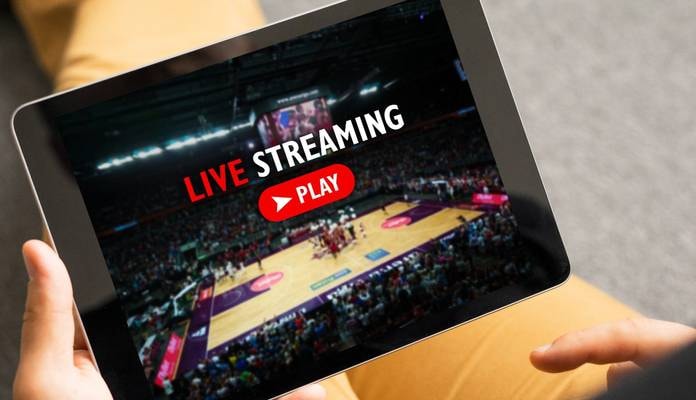If you’re seeking top-notch video translation tools to overcome language barriers, this piece showcases the premier selections for 2024. It covers a range of solutions from subtitling to dubbing and automatic translation, all designed to connect you with a worldwide audience effectively.
Key Takeaways
- The growing demand for video translation across various sectors highlights the importance of breaking language barriers to reach a global audience, enhancing accessibility, and improving SEO for businesses and content creators.
- AI-powered video translation tools optimize the translation process by using technologies like text-to-speech, AI dubbing, and speech recognition to provide accurate, cost-effective, and efficient translations, significantly improving accessibility and engagement.
- Key features to consider when choosing video translation tools include supported languages, voice quality, subtitle customization, and integration capabilities, which ensure that the tool meets specific needs and enhances the overall quality of the video content.
The Growing Need for Video Translation

The need for video translation across various industries, including marketing, education, and entertainment, is on the rise. As entities from businesses to individual creators strive to reach a global audience, they are turning towards AI video translation tools that facilitate breaking down language barriers efficiently and accurately. This ensures non-native speakers can understand your content clearly while enabling you to maintain relevance globally.
Enhanced accessibility through translating videos has proven crucial in broadening viewership – a key benefit not to be underestimated. A striking 60% of YouTube views originate from users who speak languages other than English, illustrating the immense value in supporting multiple languages with translated subtitles. Incorporating such features propels your video’s potential impact and engagement far beyond monolingual confines.
Optimizing your videos for search engines via multilingual captions considerably enhances SEO performance – leading to better ranking in searches and attracting an even broader demographic pool. For companies aiming at market expansion or cementing connections with diverse customer bases across geographical regions, providing translations into numerous languages proves imperative. It heightens viewer retention rates alongside fostering loyalty toward one’s brand by boosting conversion opportunities.
In today’s multicultural environment, where varied linguistic needs abound, continuously adapting through utilizing cutting-edge video translation tools isn’t just following a trend, it lays groundwork ensuring longevity of content delivery so that messaging resonates without hinderance caused by language barriers making sure messages reach every intended ear regardless of mother tongue differences.
How AI Translates Videos
AI technology has fundamentally altered the landscape of video translation, offering a quicker, more cost-effective, and efficient substitute to conventional approaches. The process typically starts by extracting audio from the video content and then transcribing this audio into text. Following transcription, tools such as Google Translate are employed to render accurate translations into a specified target language.
Enhancements in AI technologies have significantly improved the quality of video translations through features like:
- Text-to-speech (TTS) capabilities that convert textual transcripts into spoken words in another language for instantaneous high-quality dubbing.
- Utilizing machine learning and generative algorithms in AI dubbing allows for replacement of original vocal tracks with newly generated ones in various languages – streamlining localization while being budget-friendly.
- These advanced solutions not only ensure precise translations but also align translated dialogue with lip movements effectively — optimizing watchability for audiences who speak other languages.
Alternatively, AI-generated subtitles from transcriptions provide viewers with an option to follow along with multilingual content conveniently. Take YouTube’s auto-translate function. It leverages speech recognition technologies to produce captions initially rendered in the source language, which can be seamlessly converted across multiple target languages. This synergy between transcription processes, TTS applications, and AI dubbing positions AI video translators at the forefront for producing accessible multi-language videos efficiently.
Top 7 Video Translation Tools for 2024

Selecting an appropriate video translation tool is crucial for achieving high-quality and efficient translations. For the year 2024, the following are considered the seven best tools for video translation:
- Flixier
- Keevi
- Happy Scribe
- Notta
- Kapwing
- Veed.io
- Maestra AI
All these platforms provide distinct functionalities tailored to accommodate a variety of translation requirements.
Flixier
Flixier stands out for its powerful video translation capabilities as an online utility. It offers support for more than 30 languages, such as:
- English
- French
- Spanish
- Chinese
- Portuguese
The process of adding translations in a variety of languages is simplified to just a few clicks, ensuring flexibility across numerous translation requirements.
Flixier provides users with the convenience of a free version, accommodating various financial constraints.
Keevi
Keevi emerges as a proficient online video translator, providing a seamless translation journey via its video translator app. The platform’s user-friendly interface facilitates effortless navigation during the translation process, establishing it as an ideal option for individuals who desire to translate videos smoothly and without complications.
Happy Scribe
Happy Scribe presents a service for video translation that is capable of:
- Auto-translating materials into more than 50 distinct languages
- Expanding audience reach by making content universally understandable
- Rapidly transforming video files into written text within mere minutes, subject to the duration of the file involved
- Ensuring speedy and precise transcription from videos
This positions it as a prime choice for individuals in need of swift and reliable transcriptions from their videos.
Aiming at delivering immediate and exact translations for videos, Happy Scribe focuses on promoting greater access and boosting viewer engagement.
Notta
Notta presents an array of functionalities:
- Supports a spectrum of 15 languages
- Boasts voice cloning technology that precisely replicates the style, tone, and nuances of the user’s own voice
- Provides users with the convenience to upload videos straight from their gadgets or by pasting links from various platforms such as Google Drive, Dropbox, YouTube, or Loom. This integration streamlines and enhances the efficiency of translating content.
The diverse translation requirements are well-served by Notta’s proficient capabilities.
Kapwing
Kapwing provides powerful and precise tools for creating subtitles, offering both high efficiency and accuracy. It facilitates the upload of videos, enabling users to generate subtitles effortlessly and translate them into their desired language, thus serving as a multipurpose platform for worldwide interaction.
With Kapwing’s detailed options for choosing languages, your messages can be accurately translated across various linguistic barriers.
Veed.io
When it comes to translating audio in videos with high precision, Veed.io stands out for its exceptional accuracy rate of up to 98.5%. This online tool surpasses many others by providing noticeably more accurate video translations, establishing itself as the preferred option for users who demand precision in their translations.
Maestra AI
Maestra AI offers a flawless integration with YouTube, delivering these capabilities:
- Precise video translations across more than 125 languages
- The option for users to insert and modify subtitles on their existing YouTube videos straight from Maestra’s editing platform
- Establishing itself as an effective tool for both localization and translation of YouTube content.
The accuracy and cost-effectiveness of the translations provided by Maestra AI position it as a premier solution in the realm of video localization.
Things to Note When Choosing Video Translation Tools and Software
When choosing a video translation tool, there are several aspects to take into account to ensure it meets your requirements. It’s essential that the tool delivers an accurate translation so as not to distort the original content’s intended meaning. Search for tools recognized for maintaining high levels of accuracy and earning commendable feedback from users about their quality of translation.
The range of languages a translation tool can handle is also vital. More available languages equate to a wider audience reach for your videos. Opt for solutions with extensive language support if you’re looking to expand accessibility globally. Additional key features such as subtitle integration, dubbing capabilities, and text overlay options should be considered when determining whether a particular tool will adequately serve your needs in making content more interactive and accessible.
Finally, consider how user-friendly the interface is alongside cost-effectiveness when selecting your video translation aid. A straightforward interface simplifies the process saving both time and effort while efficiency matters greatly too — especially when budgets are concerned — compare what each tier has to offer against its price tag carefully because affordability may vary widely among different services which often provide free tiers or trial periods allowing prospective buyers some hands-on experience before investing fully into any specific service plan.
Benefits of Using AI Video Translators

AI video translators provide a myriad of advantages, such as enhanced speed in translation, reduced costs, and expanded accessibility. These tools are adept at translating videos much faster than human counterparts, thereby streamlining the content creation process for those requiring quick turnaround times. The reliance on costly human translators or outside agencies is also diminished thanks to these AI solutions.
By offering translations into multiple languages, AI translation tools significantly enhance the accessibility of video content. This paves the way for reaching a wider global audience who can now engage with content in their native language.
Speed and Efficiency
AI-powered video translation tools, including services by ai video translators, boast remarkable speed and efficiency. These systems are capable of translating videos within minutes—a task that would significantly delay human translators. For instance, VEED.io is able to deliver accurate translations in just a few moments, showcasing the swift processing power of artificial intelligence technology. Similarly, Synthesia’s AI capabilities allow for video translations to be completed in mere seconds – illustrating a drastic reduction in time compared with traditional manual translation methods.
These AI-driven video translation solutions can:
- Manage several videos concurrently which substantially boosts overall productivity.
- Swiftly process various types Video files , thereby transforming the landscape of the video translation sector.
- Provide high-caliber translated content much more quickly than what could be achieved using conventional approaches.
Cost Savings
Utilizing AI for video translation eliminates the need for expensive human translators, offering a more budget-friendly alternative. The reliance on costly external agencies and voiceover talents is also removed thanks to AI video translators, Curtailing costs. AI translation solutions can adeptly adjust in response to fluctuating content volumes, steering clear of unnecessary expenses from underused resources.
When considering the financial implications of various service levels and functionalities, cost factors play an integral role. A multitude of ai video translation tools extend complimentary versions or trial periods so potential users can evaluate their effectiveness prior to any monetary investment. Such adaptability ensures that you are able to identify a tool aligning with both your fiscal limitations and your specific requirements for translation services.
Enhanced Accessibility
Translation tools powered by AI have a profound impact on making video content universally accessible, eliminating language barriers and enabling videos to reach audiences worldwide. Translated subtitles play an essential role for viewers in quiet environments or those who are hard of hearing. Ensuring the availability of your content with translated subtitles means that people from various linguistic backgrounds and auditory abilities can appreciate your material.
Educational establishments employ video translation services to:
- Supply learning materials in multiple languages
- Broaden access to education across different audience demographics
- Expand the inclusivity and dissemination of their educational offerings
- Guarantee effective engagement with course content for students hailing from varied linguistic heritages
Key Features to Look for in Video Translation Tools
When selecting a tool for video translation, it is essential to take into account:
- The range of languages available
- The clarity and naturalness of the voice output
- Options for personalizing subtitles
- Compatibility with other systems
Paying attention to these key attributes will help tailor the tool to your individual requirements, significantly improving the quality and reachability of your translated video content.
Supported Languages
Breaking down language barriers and accessing a global audience is of paramount importance, which necessitates support for an extensive array of languages. AI video translators that can handle translation in over 70+ languages offer significant accessibility to a wide-ranging viewership. With tools like Microsoft Translator offering translations in 135 languages and speech translations across more than 45 languages, the potential for coverage is greatly expanded.
Such expansive multilingual capabilities facilitate customizing content to cater to various language communities, thereby improving engagement and expanding reach significantly. For quality, professional translations, reach out to Translated Right today!
Voice Quality
Maintaining engagement and the trustworthiness of content hinges on translations that are articulated in a voice clear and reminiscent of natural human speech. Transcription precision is bolstered by superior audio quality, simplifying the process for AI-driven tools to transcribe spoken words into text with high accuracy. Voice cloning features, such as those seen in Notta, replicate a user’s distinctive vocal style and intonation to create translated audio that remains authentic and captivating.
Employing high-caliber voice synthesis can markedly improve how viewers perceive their experience—ensuring smoothness in translation adds to its enjoyability. Robotic-sounding outputs from some AI technologies could lessen the emotive appeal within entertainment-based content. It becomes crucial then to select an AI tool adept at delivering crisp, lifelike vocal translations so audiences stay absorbed without distraction by artificial tones or inflections. Voiceover, subtitling and dubbing services offered by Translated Right are done by human native speakers at professional recording studios.
Subtitle Customization
Enhancing the viewer experience through tailored subtitle customization is essential, as it renders content more engaging and accessible. By adjusting subtitle attributes like font style, size, and color, one can significantly boost readability and satisfaction for viewers. Such adjustments make sure that subtitles are clear on any device by catering to various screen sizes and resolutions.
For subtitles to be effective, they must also be concise. Ideally staying within a two-line limit with each line containing no more than 35-40 characters. In dealing with extensive files featuring complex dialogue, multi-layered captions become critical due to their need for precise timing alignment. Video translation tools powered by AI excel in swiftly producing accurately synchronized subtitles across different languages, thereby extending your content’s reach across diverse platforms efficiently.
Integration Capabilities
Integrating seamlessly with various tools and platforms is crucial for optimizing workflows and increasing efficiency. The Cloud Translation API provided by Google Translate facilitates the integration of translation capabilities into applications and software, enabling automated translations to be performed more efficiently. This support from the API can lead to significant savings in both time and resources during the translation process.
For content creators who often work with video editing, this kind of integration becomes especially valuable. YouTube, for example, offers an option where users can import their content directly from their YouTube channel into Maestra’s editor—greatly simplifying the management of subtitles. Such integrated features play a critical role in ensuring that workflows remain consistent and efficient so that all your translation projects are executed smoothly without delay.
Real-World Applications of Video Translation
Video translation tools have significant applications across diverse sectors, offering better interaction and communication. They prove especially useful in:
- Marketing, by demolishing language barriers to expand content reach
- Education, easing comprehension for students who speak other languages and promoting cross-cultural knowledge exchange
- Entertainment, where they aid in the adaptation of games, films, television series, and online videos to enrich the viewing experience globally.
Marketing and Sales
Translated video content can greatly enhance product comprehension and increase sales conversions in the realms of marketing and sales. Global marketers can connect with audiences across multiple languages using AI-powered video translation tools, thus amplifying their brand’s reach. By translating explainer videos and promotional materials into several languages, companies are able to bolster product understanding and stimulate sales activity internationally.
Likewise, influencers harness the power of multi-language video content to forge a worldwide following by resonating personally through language commonality with their viewers.
Education
Video translation significantly enhances the accessibility of educational content, making it easier for non-native speakers to understand complex subjects. Translated educational videos help bridge language gaps, enabling students worldwide to access and engage with the material. Online courses with translated videos can reach a more diverse student population, increasing enrollment and participation.
Teachers can leverage translated content to customize their lessons, providing better learning outcomes for students who speak different languages. Some benefits of using AI video translation tools include:
- Clearer and more accurate translations
- Customizing educational videos for students who speak different languages
- Improving understanding and comprehension for non-native speakers
By utilizing these tools, teachers and trainers can enhance their teaching methods and create a more inclusive learning environment.
Entertainment
The practice of translating subtitles and dubbing within the entertainment sector serves to expand films and TV shows beyond their original language audiences, thereby widening their reach. By employing video translation across a multitude of languages, streaming services can deliver a variety of content to a global audience. The availability of translated content allows viewers worldwide to enjoy media in their native language, significantly enhancing their viewing experience.
Similarly, video game producers often provide translations as part of the functionality that promotes an immersive gaming experience for players who speak different languages. Entertainment entities leverage this ability to translate into multiple languages as a strategy for penetrating new markets on an international scale. Thus broadening inclusivity and maintaining engagement with diverse viewer groups worldwide.
Step-by-Step Guide to Using Video Translation Tools
Leveraging video translation tools can greatly enhance the quality and reach of your content. Here’s a step-by-step manual for how to translate a video.
- Begin by uploading the relevant video file.
- Choose the desired target language into which you wish to translate.
- Create subtitles and voiceovers in that language.
- Complete the process by exporting your translated product.
Uploading Your Video File
Numerous techniques exist to transfer video files into translation utilities, encompassing:
- Uploading straight from the storage of a gadget
- Utilizing cloud-based solutions
- Employing drag-and-drop features
- Using interfaces unique to specific tools
For instance, Notta enables individuals to upload videos either right from their gadgets or by pasting links sourced from Google Drive, Dropbox, YouTube, or Loom. This simplifies and optimizes the uploading procedure. Checksub similarly provides a convenient drag-and-drop option for effortless video file uploads.
Kapwing equips users with resources to not only upload videos, but also generate subtitles and choose preferred languages for converting text within those videos.
Selecting Target Language
It is crucial to choose the correct target language for a translation in order for it to resonate with native speakers. Once you’ve uploaded a video in YouTube Studio, you have the option of setting your video’s original language which will be used by auto-generated subtitles. Subsequently, this allows you to utilize the platform’s auto-translate function to determine your desired target language.
By doing so, your material becomes correctly translated and available for an audience that speaks various languages.
Generating Subtitles and Voiceovers
Creating subtitles and voiceovers is essential for ensuring your video content reaches a worldwide audience. Subtitles, available in the form of an SRT file format, function as closed captions that enable viewers to see the dialogue and key audio details textually on their screens. Voice dubbing entails substituting the original track with translated narration that aligns with the timing and emotive quality of the source material, thus offering a more engaging viewing experience.
Incorporating these elements allows audiences to comprehend and interact with your content despite any linguistic obstacles they may encounter.
Exporting the Final Product
After the review and finalization process is complete, the translated video can be exported in a desired format through video editing software. Checksub offers multiple file formats for users to export their videos, including options with subtitles integrated or audio dubbed.
The completion of this step guarantees that the translated video is prepared for dissemination and available to viewers worldwide.
Common Challenges and How to Overcome Them
Despite the many advantages that video translation tools provide, individuals often face certain obstacles. These involve dealing with several speakers within a single video, maintaining cultural appropriateness in translations, and coping with hefty file sizes.
By recognizing these difficulties and learning appropriate strategies to address them, you can enhance your ability to produce more accurate translated videos.
Handling Multiple Speakers
Utilizing unique colors or strategic text placement can serve to distinguish between various speakers, which is particularly useful in video translations. To effectively handle swift changes in speakers, real-time transcription technology plays a crucial role by precisely linking the spoken dialogue with the appropriate individual.
Positioning subtitles proximate to where the speaker appears on screen assists viewers in correlating the written words with the right person speaking, thereby improving their understanding of translated content.
Ensuring Cultural Relevance
Adapting both language and imagery to align with cultural norms is crucial for localization, ensuring that content resonates locally. When using AI video translation tools, challenges can arise in accurately conveying casual phrases and the emotional nuance of content, which may result in a loss of naturalness. The incorporation of custom glossaries within these tools is vital for the accurate translation of important terms.
Soliciting feedback from viewers plays an integral role in enhancing the quality and cultural accuracy of captions over time. This engagement enables ongoing refinement in video translation outputs.
Managing Large Files
Efficient management of substantial video files is key to preserving their quality and ensuring they are easily accessible. Utilizing cloud storage solutions can aid in the efficient handling and distribution of hefty video files. The use of video compression utilities can diminish the size of these files, without greatly impacting their quality, thus facilitating smoother management.
The task of organizing large-scale video data is Streamlined by implementing sequential captioning, which intelligently segments dialogues that overlap. This helps maintain logical continuity within the content.
Summary
In our interconnected world, the ability to translate video content has become vital, presenting advantages like faster turnaround times and cost-effectiveness while boosting accessibility. Video translation tools utilize AI to provide swift and precise translations of video content, facilitating your communication with a wide-ranging audience. When selecting such a tool for translating videos, you should consider its range of languages supported, the naturalness of voice synthesis, options for customizing subtitles, and how well it can be integrated with other systems.
Video translations have practical applications in sectors such as marketing campaigns, education programs, entertainment and media. By making this type of multimedia accessible globally, they greatly improve user engagement levels, even though some issues might arise — amongst which are dealing with dialog from several speakers at once maintaining cultural relevance is complex or managing sizable video files – understanding techniques.
Navigating these hurdles proves invaluable. So equipped selecting proper translation technology ensures that global viewership transcends linguistic obstacles, engaging audiences all over the planet.
Frequently Asked Questions
What are the top video translation tools for 2024?
In 2024, the leading tools for video translation include Flixier, Keevi, Happy Scribe, Notta, Kapwing, Veed.io, and Maestra AI. They provide an assortment of functionalities to facilitate efficient video translation and editing.
How does AI translate videos?
By pulling audio from videos, turning it into text via transcription, and subsequently translating that text to the desired language, AI facilitates video translation. The incorporation of text-to-speech and AI dubbing technologies can refine this process for a fully-realized translation output.
What are the benefits of using AI video translators?
Leveraging video translators powered by artificial intelligence can offer advantages like faster translation times, reduced expenses, and improved access, thereby making video content available to audiences worldwide. To improve audience engagement, it’s best to have a human translator to review the final video translation and ensure quality. Translated Right is the Top translation agency in Asia Pacific covering 50+ languages with more than 5000+ translators.
What key features should I look for in a video translation tool?
In selecting a tool for video translation, prioritize features such as the range of languages it supports, the quality of the vocal output, options to tailor subtitles, and how well it can be integrated to suit your unique requirements and improve your video content.
How can I handle multiple speakers in video translations?
To handle multiple speakers in video translations, you can differentiate between speakers using distinct colors or positioning text to indicate different individuals. Real-time transcription technology also helps manage rapid speaker changes for accurate attribution of dialogue.







